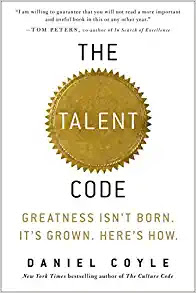We started the month of August with a research goal of discovering more about the family constellation of Margaret Flannery Tully, my father-in-law's great-grandmother from County Tipperary, Ireland. While my hope was to complete the family portrait with the names of her siblings as well as those of her husband, Denis Tully, from their children's baptismal records, we are far from the Flannery finish line.
There are, however, a few observations we can make as we wrap up the month's work. This, of course, requires us to revisit the one couple, John Tully and Kitty Flannery, who at the start seemed most promising as siblings to both members of the great-grandparent couple.
If we rely on the Irish naming tradition—still prevalent in the western portions of Ireland before the famine years—a proud papa would name his firstborn son in honor of his own father, the child's paternal grandparent. Of course, baptismal records from the time period we are researching can be spotty—and, even if still available, sometimes difficult to read owing to poor scans, torn records, or abysmal handwriting from the source.
Thus, if we assume that the first son recorded—that we can find—for John Tully was a boy baptised as "Patt" Tully, then we can guess that John's father was named Patrick Tully. Comparing that first-born son to that of our Denis Tully and Margaret Flannery—the boy was named Michael—requires us to assume that Denis and John could not be Tully brothers. Tully cousins, perhaps, but not brothers—unless some baptismal records were missing.
Thus, the connection shown, in the case of Denis or John standing in as sponsor for the other's children, would be that of in-law. That's the best we can tell at this point, given the material available to consult. In the case of Margaret Flannery Tully's son William, for whom John Tully served as sponsor, he was standing in as brother-in-law. In the case of Margaret's daughter Johanna, however, godmother Kitty Flannery was more likely to be Margaret's sister.
What is interesting about tracing Kitty Flannery and her husband John Tully forward in time is to notice that, for their daughter Judy, baptised in 1844, one of the sponsors named was Darby Tully. Darby is a name which I've seen pop up in Irish records in Ballina before, so this time I pursued it further.
While Darby may seem an unusual name in current times—thus, giving us hope that it would be an easier name to research without the looming demon of name twins—it was apparently more popular back in the time of our Tully and Flannery ancestors in County Tipperary. Looking at the baptismal records in Ballina, I could find two different men named Darby Tully—one with a wife named Mary "Hagan" (or possibly Hogan), the other with a wife named Biddy Ryan.
Moving forward in time, I wondered whether I could find any Tully family with either couple's given names, immigrating with their extended family members to Canada. It was worth a look, as so many others from Ballina had evidently made the same immigration choice, along with Denis and Margaret Flannery Tully.
As it turned out, there was one household headed by a man named Darby Tully, settled by the time of the 1851 Canadian census in a township called Blenheim, then in Oxford County, Ontario. This, I discovered by examining border histories of the evolving colonial governance, was not the same location as the community of Blenheim in the current-day municipality of Chatham-Kent, but the township now known as Blandford-Blenheim. In today's terms, a mere twenty minute drive from the village of Paris in which our Denis and Margaret Flannery Tully settled, there was real possibility that this Darby Tully could have been our man.
But which Darby would he have been? Looking at the 1851 census record, it appears that Darby had lost his wife before that enumeration, so there was no way to determine if this was Darby, husband of Mary, or Darby, husband of Biddy.
The next name appearing in the 1851 census record was that of a daughter, Margaret, aged fifteen. Yet again, that itself wasn't enough of a clue, for each Darby Tully family in Ballina had a baptismal record for a daughter named Margaret: one baptised in 1837, the other in 1841.
Even that was too close of a match, given the Irish propensity—at least in the New World—to represent their ages in a more general estimate. But the next line in the 1851 enumeration may have clinched the answer for us, with a son named Patrick. The Darby plus Mary household in Ireland, while sporting many additional children's names in the baptismal records, lacked one: Patrick. Darby and Biddy, however, provided us only two children's names: Margaret and Patrick.
Still, the baptismal record for "Patt" Tully in Ballina was dated May 9, 1839, while the 1851 census record listed a son by that name, aged thirteen. Still, I'd call that close enough to remain a serious contender. All that's left—and I say "all" with a wry sense of the word—is to follow that Tully family through history and see what other documents might show up to confirm or deny the connection.
Indeed, that is "all" that is left to do for that original question which began this month's search: find further records for each of these possible immigrants to Canada. Following records for William Flannery and his son John, Edmund Flannery and his son John, the two other John Tullys, and the several other names listed in the baptismal records associated with these families, back in Ballina, is really "all" it takes.
That work, however, will be my task to complete in the background. For tomorrow, we begin a new month, and launch into yet another goal for my "Twelve Most Wanted" for 2021: attempting to find my father-in-law's most mysterious great-grandparent, Stephen Malloy.




